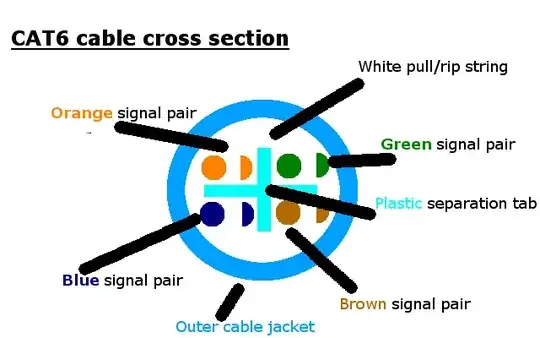Sorry, I know this is resurecting an old thread, but I felt like I needed to put my 2 cents in...simply because I've gone through this recently at my new workplace and am looking into "testing" all the lines that have been run in the last 10 years.
CAT5, CAT5e and CAT6 share a few common requirements. Among those things are the RJ45 connectors (clear plastic male plugs as well as the female jacks). The connectors are used for backwards compatibility. With the use of RJ45 connectors we are then forced to use the familiar 4-pair signal wire. Externally everything looks the same. It has to in order to be physically compatible and give you that satisfying "click" when you plug things in.
Internally, much tighter specs need to be adhered to ensure conformity to each of the standards. Each iteration of the spec from CAT5 to CAT6 simply makes for more stringent requirements. One of the CAT6 specs requires separation distance of the twisted pairs to prevent cross talk. The most common way by manufacturers to achieve this distance is a plastic insert that runs the entire length of the cable. The plastic insert looks like a "+" sign if you crossection it and each of the 4 pairs of wire then can fit in each quadrant of that insert. It's like having 4 workers separated in cubicles (each pair of singal cables being a worker) and allowing said workers to carry more private phone converstation than if the cubicle walls didn't exist.

Now what happens when you open that cable up to field terminate it into an RJ45 male connector? If you were to use the CAT5e connectors that have been arround FOREVER, each individually coloured signal cable was not distanced when terminated. They were right next to each other...many times touching. I always thought how magical it was that I could simply lign up and pinch the wires between my thumb and index fingers and shove them into the connector and be able to rely on small guides to keep the cables in check. Very seldom, I would look into the connector and see that my colour lign up had gotten "guided" into the wrong channel. Other times I've done troubleshooting on a network connection for a computer and it's turned out to be a simple patch cable problem. Replacing the cable fixed it. Inspecting the cable afterward showed that it was miswired. So, the old connectors allowed cock ups like this and as well, allow the cables to move horizontally to come close enough to each other again to create this "cross talk" phenomenon. If the singal wires were put into the connector and checked before termination, miswiring could be prevent. Cross talk can occur even after termination though. That cubicle shaped separator that added so much cost into the length of the CAT6 cable would then been negated if used with a CAT5e male connector. Manufacturers then added a tiny, rediculously annoying piece to the male plugs to fix this and be in conformance to CAT6 separation requirements. The additional piece is a template which forces you to first put all the coloured wires into it, ensuring separation of the signal wires and prevention or horizontal and vertical movement after termination.
Why is cross talk such a problem? Cross talk is really just "leakage". The same ability of ours to send a tone down a wire and listen to it through induction is the effect of one wire leaking it's signal into another wire adjacent to it. Receiving equipment would get confused and sometimes ask for retransmission of the data packets being sent. This means lost bandwidth as the available bandwidth is being used to transmit the same data twice. To get that 10Gb, you can't have signals being retransmitted to often.
On top of the requirement for that reduced crosstalk, the data is sent at 150% greater rate. 250Mhz for CAT6 as opposed to 100Mhz for CAT5 and CAT5e. You now need thicker copper cable to create less resistance of electrical signals. For that CAT6 cable from most manufacturers has a slightly thicker gauge (as opposed to more pure copper).
There are differences in the female plugs as well.
All things said, if all you want is gigabit transfer speeds, you can mix and match CAT5e and CAT6. If you however NEED the 10Gb speeds that proper CAT6 can provide (upto 55 metres), you must not only use the proper cables and connectors, but after termination you MUST VERIFY using testing equipment that the connectors were terminated properly, and that their cable lengths conform to limits. The testing equipment goes beyond the $20 ebay testers. The testers range anywhere upwards of $500-$3k. Then there are certifiers as well...$9k+ which some institutional, government etc require you to use to guarantee conformance.
